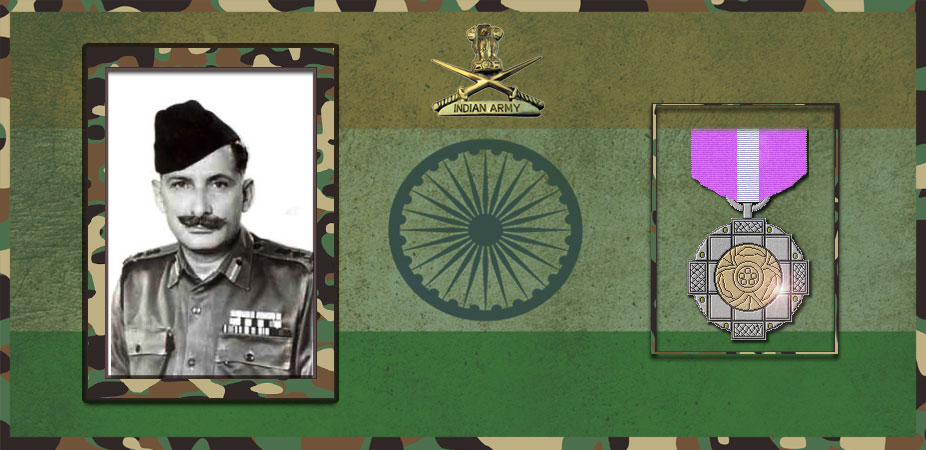Let's salute to our Indian Army together, We are proud to be Indian.
Let's salute to our Indian Army together, We are proud to be Indian.

Field Marshal Sam Hormusji Framji Jamshedji Manekshaw, MC (3 April 1914 – 27 June 2008), popularly known as Sam Bahadur (“Sam the Brave”), was the Chief of the Army Staff of the Indian Army during the Indo-Pakistani War of 1971, and was subsequently the first Indian Army officer to be promoted to the rank of field marshal. His military career spanned four decades and five wars, beginning with service in the British Indian Army in World War II, and he is widely regarded as one of the greatest military commanders in independent India’s history.
Manekshaw joined the first intake of the Indian Military Academy (IMA) in 1932. He was commissioned into the 2nd Battalion, Royal Scots, and later posted to the 4th Battalion, 12th Frontier Force Regiment. During action in World War II, he was awarded the Military Cross for gallantry. Following the partition of India in 1947, he was reassigned to the 16th Punjab Regiment. Manekshaw was seconded to a planning role during the 1947 Indo-Pakistani War and the Hyderabad crisis, and as a result he never commanded an infantry battalion. He was promoted to the rank of brigadier while serving at the Military Operations Directorate. He became commander of 167th Infantry Brigade in 1952 and served in this position until 1954, when he took over as the Director of Military Training at Army HQ.
On completion of the higher command course at the Imperial Defence College, and he was appointed the General Officer Commanding of the 26th Infantry Division. He also served as the commandant of the Defence Services Staff College. In 1961, Manekshaw made some derogatory comments about the political leadership which caused him to be marked as an anti-national and led to charges being made. He was exonerated in the subsequent court of inquiry and took command of the IV Corps in November 1962. The next year, Manekshaw was promoted to the position of army commander and took over Western Command, transferring in 1964 to the Eastern Command.
Having already commanded troops at division, corps and regional levels, Manekshaw became the eighth chief of the army staff in 1969. Under his command, Indian forces conducted victorious campaigns against Pakistan in the Indo-Pakistani War of 1971, which led to the creation of Bangladesh in December 1971. For his services, he was awarded the Padma Vibhushan and the Padma Bhushan, the second and third highest civilian awards of India.
Sam Manekshaw was born on 3 April 1914 in Amritsar, Punjab, to Parsi parents—Hormusji Manekshaw, who was a doctor, and Hilla, his wife—who had moved there from the city of Valsad in the coastal Gujarat region. His father had served in the British Indian Army as a captain in the Army Medical Corps and participated in World War I. Manekshaw was the fifth of six children; his younger sibling, Jemi, served in the Royal Indian Air Force as a doctor and was the first Indian to be awarded the air surgeon’s wings from the Naval Air Station Pensacola in the United States.
Manekshaw completed his primary schooling in Punjab, and then went to Sherwood College, Nainital. He left the college at the age of 15 with a distinction in the School Certificate of the Cambridge Board, an English language curriculum developed by the University of Cambridge International Examinations. He asked his father to send him to London to study medicine, but his father refused, stating that he was not old enough.
In the meantime, the Indian Military College Committee, which was set up in 1931 and chaired by Field Marshal Sir Philip Chetwode, recommended the establishment of a military academy in India to train Indians for commissioning into the army. A three-year course was proposed, with an entry age of 18 to 20 years. Candidates would be selected on the basis of an examination conducted by the Public Service Commission. After the approval of the committee’s recommendation, a formal notification for entrance examination to enrol in the Indian Military Academy (IMA) was issued in the early months of 1932 and examinations were scheduled for June or July. In an act of rebellion against his father’s refusal, Manekshaw applied for a place, and was one of the fifteen cadets to be selected through open competition. He was placed sixth in the order of merit.
Indian Military Academy
Manekshaw was selected as part of the first batch of cadets to attend IMA. Called “The Pioneers”, apart from Manekshaw, his class also produced Smith Dun and Muhammad Musa, future commander-in-chiefs of Burma and Pakistan, respectively. Although the academy was inaugurated by Chetwode on 10 December 1932, the cadets’ military training commenced on 1 October 1932. Manekshaw proved to be witty during his stay at IMA and went on to achieve a number of firsts: the first graduate to join one of the Gorkha regiments; first to serve as the Chief of the Army Staff of India; and first to attain the rank of field marshal. Of the 40 cadets inducted, only 22 completed the course, and they were commissioned as second lieutenants on 1 February 1935 with an anté-date seniority of 4 February 1934.
At the time of Manekshaw’s commissioning, it was standard practice for newly commissioned Indian officers to be intially attached to a British regiment before being sent to an Indian unit. As a result, Manekshaw joined the 2nd Battalion, The Royal Scots, a British unit stationed at Lahore. He was later posted to the 4th Battalion, 12th Frontier Force Regiment, commonly known as the 54th Sikhs, stationed in Burma. He was promoted to lieutenant in 1936, with seniority from 24 February.